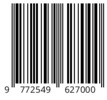Psikologi Kegelapan: Membedah Konflik Batin Tokoh Utama Dalam Novel Rumah Tanpa Cahaya
Abstract
This study examines the psychology of the main character in the novel Rumah Tanpa Cahaya by Regita-Lenn Liu. The research aims to identify the psychological conflict experienced by the main character, Natta, through Sigmund Freud's personality theory (id, ego, superego) that illustrates the mental turmoil caused by family dynamics. The methodology used is hermeneutic qualitative analysis, focusing on symbolic and textual interpretation. The results of the analysis show that Natta experiences internal conflict between desire (id), reality (ego), and moral values (superego), especially in her relationship with her younger brother, Alie, who is ostracised by his family. This conflict shapes Natta's decisions, showing that the id has an important role in the positive actions she takes, despite going against her social environment. This study reveals that psychological elements in novels can provide an in-depth understanding of the complexity of characters and their impact on the storyline. The implication is that psychological analysis of literature helps readers understand personality dynamics in fictional narratives and their relevance to real-life conflicts.
Keywords
Full Text:
PDFReferences
Alwisol, S. (2018). Dasar-dasar Evaluasi Pendidikan Edisi 3. Bumi Aksara.
Amalia, N., & Yulianingsih, S. (2020). Kajian psikologis humanistik abraham maslow pada tokoh utama dalam novel surat dahlan karya khrisna pabichara. Imajeri: Jurnal Pendidikan Bahasa Dan Sastra Indonesia , 02(2), 149–156. https://doi.org/10.29405/imj.v2i2
Amir, P. A., Udu, S., & Konisi, L. Y. (2024). Psikologi tokoh dalam novel mahika karya aya (kajian psikoanalisis sigmund freud). Jurnal Sastra, 9(2), 2503–3875. https://doi.org/10.36709/bastra.v9i2.395
Anderson, K. M. (2021). Understanding Author's Psychology Through Narrative Elements: A Study of Literary Components. International Journal of Literature and Psychology, 28(2), 156-171. https://doi.org/10.1080/ijlp.2021.28.2.156
Ate, P, C., Triyanti, S., & Ndapa Lawa, M. (2022). Analisis unsur intrinsik novel ayah karya andrea hirata. HINEF: Jurnal Rumpun Ilmu Pendidikan, 1(No. 1), 34–41. https://doi.org/10.37792/hinef.v1i1.390
Boag, S. (2017). Metapsychology and the foundations of psychoanalysis: Attachment, neuropsychoanalysis and integration. Routledge.
Dancygi, B., & Sweetser, E (2014). Figurative Language (Cambridge Texbook of Linguistics). Cambridge University Press.
Denzin, N. K., & Lincoln, Y. S. (2018). The SAGE handbook of qualitative research (5th ed.). SAGE Publications.
Dobrovol'skij, D. & Piirainen, E. (2022). Figurative Language: Cross-Cultural and Cross-Linguistic Perspectives. Berlin, Boston: De Gruyter Mouton. https://doi.org/10.1515/9783110702538
Dzikrulloh, M., Pamungkas, Y., & Susanto, A. (2022). Analisis kejiwaan tokoh utama dalam novel penakluk badai karya aguk irawan mn. Ruang Kata Journal of Language and Literature Studies, 2(1), 1–21. https://doi.org/10.53863/jrk.v2i01.421
Endraswara, S. (2011). Metodologi penelitian sastra: epistemologi, model, teori, dan aplikasi (Tim Redaksi CAPS, Ed.; 1st ed., Vol. 1). CAPS.
Faruk (2012).Metode Penelitian Sastra : Sebuah Penjelajahan Awal. Pustaka Pelajar.
Forster, M. N., & Gjesdal, K. (Eds.). (2019). The Cambridge companion to hermeneutics. Cambridge University Press.
Freud, S. (1961). The ego and the id (J. Strachey, Ed. & Trans.). Norton. (Original work published 1923)
Freud, S. (1989). The psychopathology of everyday life (J. Strachey, Trans.). Norton.
Gabbard, G. O., & Scarfone, D. (2022). Contemporary perspectives on the mechanisms of therapeutic action in psychoanalysis. International Journal of Psychoanalysis, 103(1), 51-70. https://doi.org/10.1080/00207578.2022.2025651
Garmendia, J. (2023). Lies we don't say: Figurative language, commitment, and deniability. Journal of Pragmatics, 218, 183-194. https://doi.org/10.1016/j.pragma.2023.11.003
Jatman, D. (2002). Psikologi perkembangan. Bidang peneliti UNDIP.
Kernberg, O. F., & Diamond, D. (2021). Transference focused psychotherapy: Recent developments. Psychoanalytic Inquiry, 41(4), 227-242. https://doi.org/10.1080/07351690.2021.1899335
Khomisah.(2023).Metodologi Penelitian Sastra Modern Approach. Jejak Pustaka.
Kosasih, A. (2023). Struktur Teks Hikayat Syekh Abdul Qodir Jailani Dalam Tradisi Karya Sastra Sunda: Struktur Teks Hikayat Syekh Abdul Qodir Jailani Dalam Tradisi Karya Sastra Sunda. KABUYUTAN, 2(3), 231-236. https://doi.org/10.61296/kabuyutan.v2i3.202
Lester, D. (1995). Theories of Personality: A Systems Approach (1st ed.). Routledge. https://doi.org/10.4324/9780429026027
Minderop, A. (2011). Fiction Study Characterization Method. Indonesia Torch Foundation.
Nurgiyantoro, B. (2018). Teori pengkajian fiksi. UGM press.
Nurjam’an, M., Musaljon, M., Sofiatin, S., & Amri, A. (2023). Analisis Psikologi Sastra Dalam Novel Paradigma Karya Syahid Muhammad Sebagai Pengembangan Bahan Ajar Dalam Pembelajaran Sastra di SMA. Jurnal Ilmiah Hospitality, 12(1), 105-112. https://doi.org/10.47492/jih.v12i1.2639
Oktavia, E., Sanjaya, D., & Sanjaya, R. (2023). Analisis psikologis dalam novel “menantimu di ujung rindu (mengapa allah memilihkan dia untukku)” karya riri abdillah. Jurnal Bindo Sastra, 7(1), 1–6. https://doi.org/10.32502/jbs.v7i1.4703
Permana, A., Juwita, L., & Zenab, A. S. (2019). Analisis unsur intrinsik novel “menggapai matahari” karya dermawan wibisono. Analisis Unsur Intrinsik Novel Menggapai Matahari Karya Dermawan Wibisono, 21. https://journal.ikipsiliwangi.ac.id/index.php/parole/article/view/1885
Person, E. S., & Fonagy, P. (2020). On Freud's "The Ego and the Id". Journal of the American Psychoanalytic Association, 68(2), 289-303. https://doi.org/10.1177/0003065120928714
Pomolango, C. S., & Bangtayan, Z. A. (2024). Analisis kajian psikologi sastra pada novel pulang. Jurnal Bahasa, Sastra, Dan Budaya, 14(1), 2024. http://ejurnal.ung.ac.id/index.php/JBSP/index
Regita, & Lenn Liu. (2024). Rumah Tanpa Cahaya (Vie Asano, Ed.; Juli 2024, Vol. 1). Tekad.
Rodriguez, M., Cruz, A., Santos, B., & Lee, J. (2020). The Role of Sociological and Religious Elements as Extrinsic Factors in Contemporary Fiction. Research in Literary Theory, 33(4), 78-95. https://doi.org/10.1007/rlt.2020.33.4.78
Sholikhah, I. H., & Huda, I. S. (2024). Cerita Anak Mamlakah Al-’Adl Karya Ismail Abdul Fatah: Analisis Struktural. JoLLA Journal of Language Literature and Arts, 4(3), 272–287. https://doi.org/10.17977/um064v4i32024p272-287
Sidik, H., & Sulistyana, P, I. (2021). Hermeneutika sebuah metode interpretasi dalam kajian filsafat sejarah. Jurnal Agastya, 11(No.1), 19–34. https://doi.org/10.25273/ajsp.v11i1.6224
Smith, J., & Brown, R. (2021). The Intersection of Intrinsic and Extrinsic Elements in Contemporary Literature: A Psychological Perspective. Journal of Literary Studies, 45(2), 112-128. https://doi.org/10.1080/jls.2021.45.2.112
Solms, M., & Turnbull, O. H. (2021). The brain and the inner world: An introduction to the neuroscience of subjective experience. Frontiers in Psychology, 12, 631885. https://doi.org/10.3389/fpsyg.2021.631885
Stamper, C. (2020). Letter Writing: Life in Letters—A Method of Qualitative Inquiry. In: Ward, J., Shortt, H. (eds) Using Arts-based Research Methods. Palgrave Studies in Business, Arts and Humanities. Palgrave Macmillan, Cham. https://doi.org/10.1007/978-3-030-33069-9_7
Sumardjo, J. (2007). Ekologi Sastra Lakon Teater Indonesia. Kelir.
Wang, L., & Kumar, P. (2022). Psychological Aspects of Character Development in Modern Novels: An Analysis of Intrinsic Elements. International Journal of Psychology and Literary Studies, 18(3), 245-260. https://doi.org/10.1016/ijpls.2022.18.3.245
Yakeley, J. (2018). Psychoanalysis in modern mental health practice. The Lancet Psychiatry, 5(5), 443-450
DOI: https://doi.org/10.31002/transformatika.v9i2.9654
DOI (PDF): https://doi.org/10.31002/transformatika.v9i2.9654.g3574
Refbacks
- There are currently no refbacks.
Copyright (c) 2025 Heni Kurniawati, Siti Faridah, Onok Yayang Pamungkas

This work is licensed under a Creative Commons Attribution-ShareAlike 4.0 International License.


_(2)_.png)
.png)
_.png)
.png)
.png)















